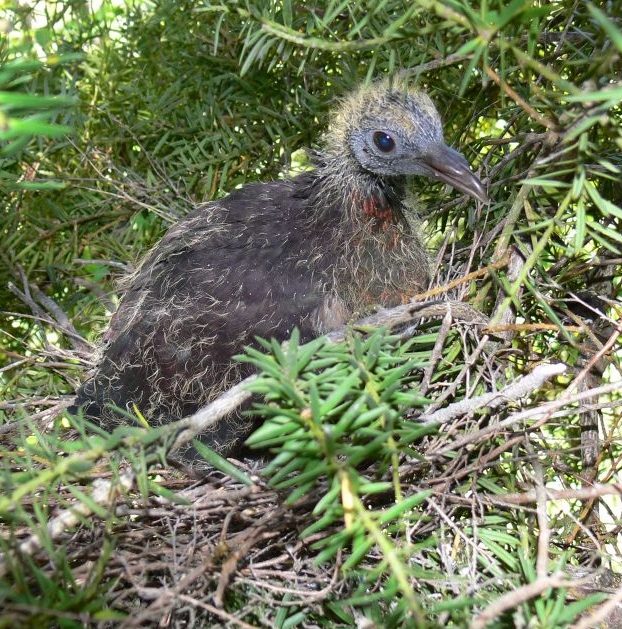Where do kererū live?

A kererū chick on the nest (Photo by Abel Tasman Backpackers)

A kererū chick on the nest (Photo by Abel Tasman Backpackers)
Kererū are only found in New Zealand, which means they are endemic. You can spot them in forests, parks, reserves and gardens all over New Zealand, but they are most common in the forests of Northland, the King Country, Nelson and the West Coast.
Before humans and predators came to New Zealand there would have been flocks of hundreds of kererū in forests all over the country.
Adults make a nest – an untidy platform of sticks in a fork of a tree or in a tangle amongst some vines. They lay just one egg in the nest, which the male and female take turns to keep warm for a month before it hatches.
Nesting and breeding
Kererū raise one chick at a time in a well-hidden nest of twigs. Both parents incubate the egg, which hatches after about a month. Kererū are monogamous and are often seen in pairs. In good conditions, they can live up to 21 years, but they are slow breeders with only one egg laid per clutch. In a good breeding season when there is lots of fruit available, they could raise three chicks, but in years where there is little to no fruit available, no eggs are laid. Eggs are usually laid between September and April with both parents sharing incubation.
Kererū are unusual in that they are one of only a few birds that produce crop milk to feed their chicks, it is a protein-rich milky secretion from the walls of the parents’ crops. When the chicks are a bit older this is combined with fruit pulp until it leaves the nest at about 40 days old but the parents continue feeding them for at least another two weeks.

No comments:
New comments are not allowed.